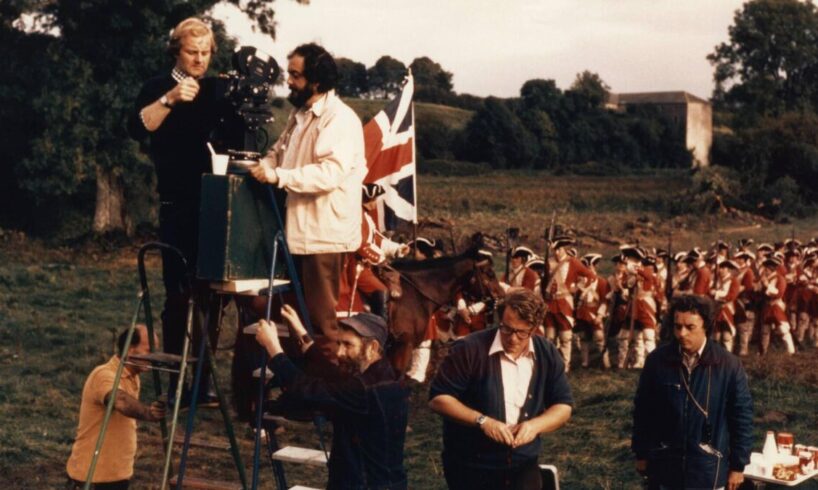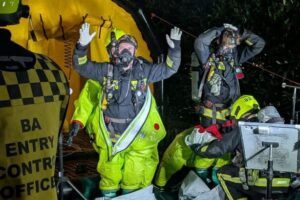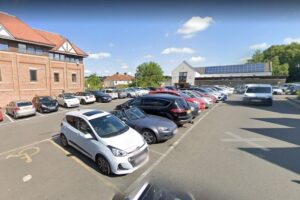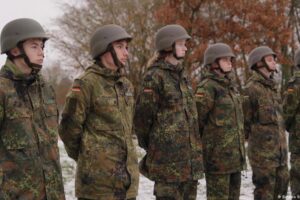
It’s the lavish, lauded and lovingly lit period drama centred around the rise and fall of a charming scoundrel and social climber.
Shot across a variety of Irish locations including Dublin Castle, Powerscourt, Waterford and Cahir. Barry Lyndon brought cutting-edge technology and storytelling to our screens when it was released in 1975. Now, Stanley Kubrick’s adaptation of William Thackeray’s novel returns to Irish cinema screens in a new 4K restoration to mark its 50th anniversary. The Triskel and Cork Omniplex are among the cinemas bringing it to the big screen.
Fresh from making such beloved movies as 2001: A Space Odyssey and Dr Strangelove, British filmmaker Kubrick travelled to Ireland to make his period epic, starring Ryan O’Neill in the title role and Marisa Berenson as his wife. The movie revolves around a young 18th-century Irishman who, following a series of setbacks, goes to great lengths to advance himself.
But there was a dramatic ending to the shoot – approximately nine months after filming on the ambitious movie began in late 1973, Kubrick would beat a hasty retreat out of Ireland amid reported threats and complicating factors connected with The Troubles.
Ryan O’Neill and Marisa Berenson in Barry Lyndon.
Nevertheless, Barry Lyndon is regarded as a memorable time in Ireland’s screen history – coming as it did at a time of growing momentum for the then-tiny Irish film industry. Kubrick, one of cinema’s best known and most admired filmmakers following a string of critical hits, would go on to shoot only three more movies – The Shining, Full Metal Jacket and Eyes Wide Shut, before his sudden death at the age of 70, just days after delivering his final film.
Barry Lyndon is a film that has become more loved with time, believes Dr Barry Monahan, senior lecturer in the Department of Film and Screen Media at UCC – and its re-release this week is an opportunity to embrace its many qualities.
“You can drill into it and find magnificent little moments, and then see the whole thing weave together,” says Monahan, adding that Kubrick always liked to add a heightened feel to his films. “Everything had to be epic. That’s exactly what he leaned into with Barry Lyndon – its sheer scope, its complexity, is incredibly admirable.”
Remarkably, Kubrick – who wanted to film many of Barry Lyndon’s striking scenes by candlelight – used a lens initially developed for NASA that enabled him to do so.
“He wanted to shoot the interiors with candlelight predominantly, or natural light coming in through windows,” says Monahan. “That’s one of the big technical feats, and that really was a big thing.”
The ZEISS lens – known as one of the fastest lenses ever developed – could film with very low light and without artificial light and only a small number of them were ever developed. They were originally used for lunar exploration.
The advertisement in the Cork Examiner in May 1976 for Barry Lyndon showing at the Capitol cinema.
Barry Lyndon was shot here at a time when Ireland’s film industry had yet to build indigenously to become the internationally respected industry it is today. It would be another number of years before the act to establish The Film Board (now Screen Ireland) was passed in 1980.
There had been efforts to build a screen industry here for many decades before, but the arrival of such a prolific filmmaker helped showcase Ireland’s beauty as a location, says Monahan, at a time there had long been a growing desire to develop more of a film culture in Ireland. “As a venue, as a place that could really dress up as a period piece very well, that was beautiful, it had the kind of backdrops that producers would need in a reasonably accessible and reasonably low-budget way. And Kubrick’s name associated with a project like that was just magnificent.”
Film academics Dr Maria Pramaggiore and Dr Barry Monahan.
The shoot also brought a top US heartthrob to these shores in the form of the late Ryan O’Neal. Having recently filmed the Hollywood hit, Love Story, and starred opposite his daughter Tatum in Paper Moon, the period epic marked something of a departure for the star. In fact, the film marked a new adventure for both its leading man and its director, says Dr Maria Pramaggiore, author of Making Time in Stanley Kubrick’s Barry Lyndon: Art, History, and Empire.
“Kubrick’s overall body of work is small and much beloved by an intense fan and critical following,” says Pramaggiore. “My interest in Barry Lyndon and my approach to it were motivated by my interest in Irish cinema,” adds the US writer and academic, who was based in Ireland for several years. “It is arguable – some people might not characterise or categorise Barry Lyndon as Irish cinema.”
She feels that the film has been historically underloved – but that that has changed. “I thought it was quite interesting that Kubrick chose this project. He lived so very long in Britain, and saw himself as stepping outside of the Hollywood system to make his films. It was never going to suit him, because he wanted so much authority over the projects that he was never going to sit comfortably in the Hollywood system, and yet he used Hollywood studios to release his work.”
While writing her book, Pramaggiore aimed to delve deeper into the circumstances behind the sudden departure of Kubrick and his production from these shores after several months of filming here. It was a shoot that didn’t end conventionally, amid claims that Kubrick had come under IRA threat. Has she been able to piece together the final dramatic days of the production?
“I remain with question marks. It is a mystery. It speaks to, in some ways, both politics that could not be escaped at that time and in that place, Dublin in 1973 with the IRA campaign moving across the border. And also to the industry side of film – the debate about how the production ended was based on reports that there had been a bombing in the Phoenix Park on a day production was due to film there, and they did not film that day. And then there were reported phone calls to Kubrick: ‘You better leave, or else; people are in danger’. It’s always been reported threats. It took a very long time after they left – two more years – to finish production.”
A scene from Barry Lyndon.
As the richly detailed film – regarded by many as a masterpiece – returns to our screens, Pramaggiore feels its uniqueness continues to resonate with new and returning audiences. “It was rolled out in very much an art film, masterpiece mode. It’s a period drama. Fans of Ryan O’Neal might have been surprised, coming off of Love Story and Paper Moon. If you were a fan of Ryan O’Neal, and you rocked up to Barry Lyndon at three hours and 14 minutes with an intermission and the voice over and the inter-titles, you would have been confused.”
Likewise, she feels that even Kubrick fans mightn’t have been expecting Barry Lyndon at this time in the filmmaker’s career. “I would venture that Kubrick fans coming from 2001, A Clockwork Orange, Doctor Strangelove, they would not be expecting what I would call the sort of toxic masculinity that Kubrick did so well. He wouldn’t have called it that, probably! He was very keenly aware of the problems of masculinity and warfare, so often a theme in his work.”
Barry Lyndon returns to select cinemas from July 18





